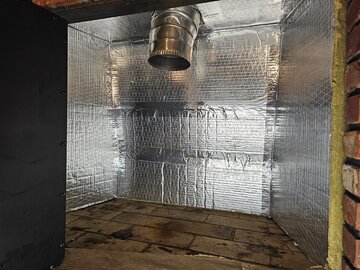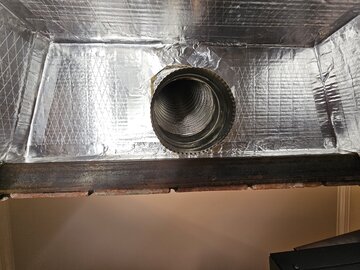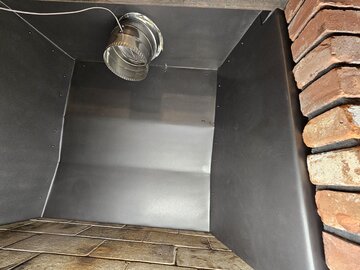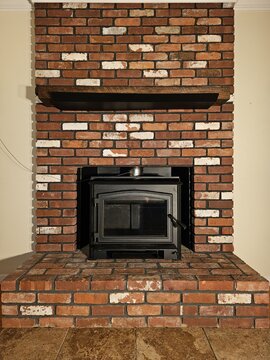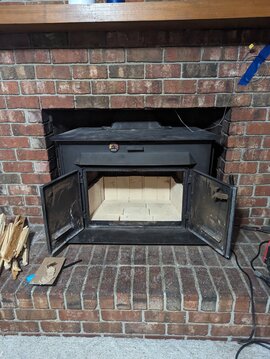Good afternoon.
I'm working through insulated flex liner installing right now. And have 3 questions.
I have 13x13 opening in clay tile that I dropped down 8" insulated flex liner. It filled the gap pretty well but there are still a little bit of room left. Would I benefit from getting some rock wool and stuffing gaps at the top between SS liner and clay tile, before I put chimney cap on and then also putting some wool at the bottom of the chimney. Maybe filling a smoke chamber or smoke shelve with rock wool to keep heat closer to the living space than going up the flue?
Couple of pictures showing that liner coming down. I removed most of the smoke shelve out so it'll have a straight shot to the stove. And created extra room. Another picture showing appliance connector to the stack conversion piece. This is buck stove rectangular to 8" round adapter. Where would you suggest to attach auber thermocouple sensor? It's supposed to be attached with a screw about 18 inches above the stove. The buck stove adapter is 12 inches and another 6 inches of appliance connector. I was thinking about just putting sensor/thermocouple between adapter and appliance connector. Would that be accurate?
Also do I need to screw adapter and appliance connector together? They hold pretty good and snug fit. So I still need to attach them with screws?
Stove will be put inside the fireplace and I have facia kit that will cover all the gaps to seal it off.
Thank you for your advice.
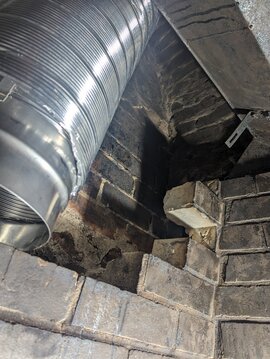
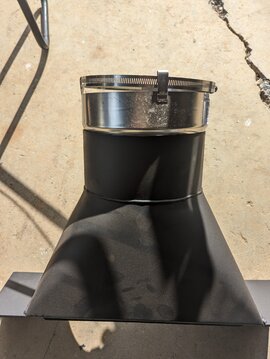
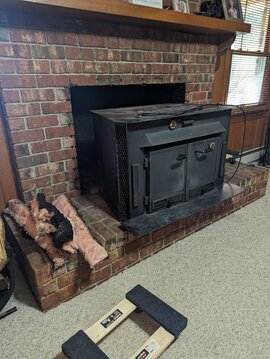
I'm working through insulated flex liner installing right now. And have 3 questions.
I have 13x13 opening in clay tile that I dropped down 8" insulated flex liner. It filled the gap pretty well but there are still a little bit of room left. Would I benefit from getting some rock wool and stuffing gaps at the top between SS liner and clay tile, before I put chimney cap on and then also putting some wool at the bottom of the chimney. Maybe filling a smoke chamber or smoke shelve with rock wool to keep heat closer to the living space than going up the flue?
Couple of pictures showing that liner coming down. I removed most of the smoke shelve out so it'll have a straight shot to the stove. And created extra room. Another picture showing appliance connector to the stack conversion piece. This is buck stove rectangular to 8" round adapter. Where would you suggest to attach auber thermocouple sensor? It's supposed to be attached with a screw about 18 inches above the stove. The buck stove adapter is 12 inches and another 6 inches of appliance connector. I was thinking about just putting sensor/thermocouple between adapter and appliance connector. Would that be accurate?
Also do I need to screw adapter and appliance connector together? They hold pretty good and snug fit. So I still need to attach them with screws?
Stove will be put inside the fireplace and I have facia kit that will cover all the gaps to seal it off.
Thank you for your advice.







